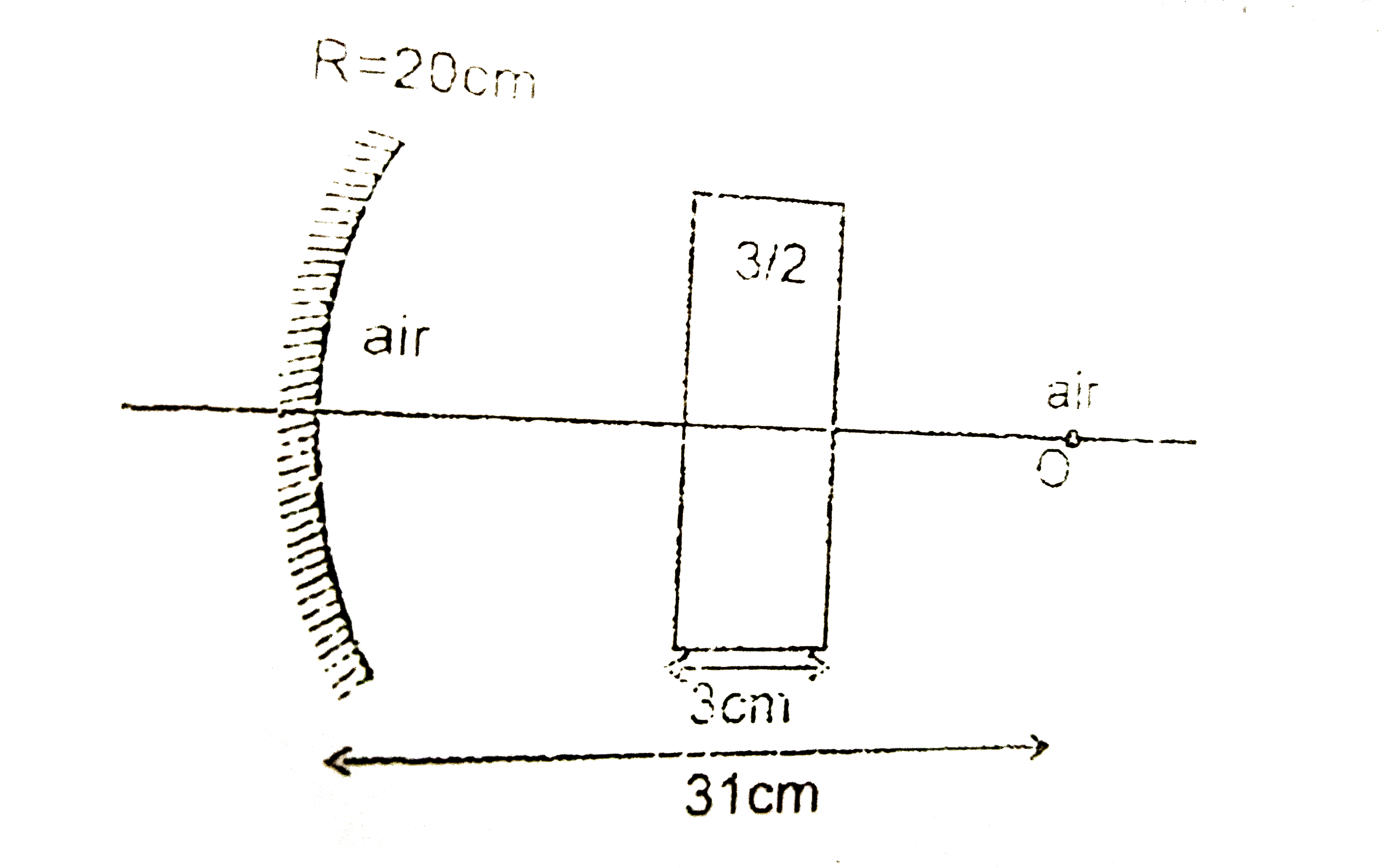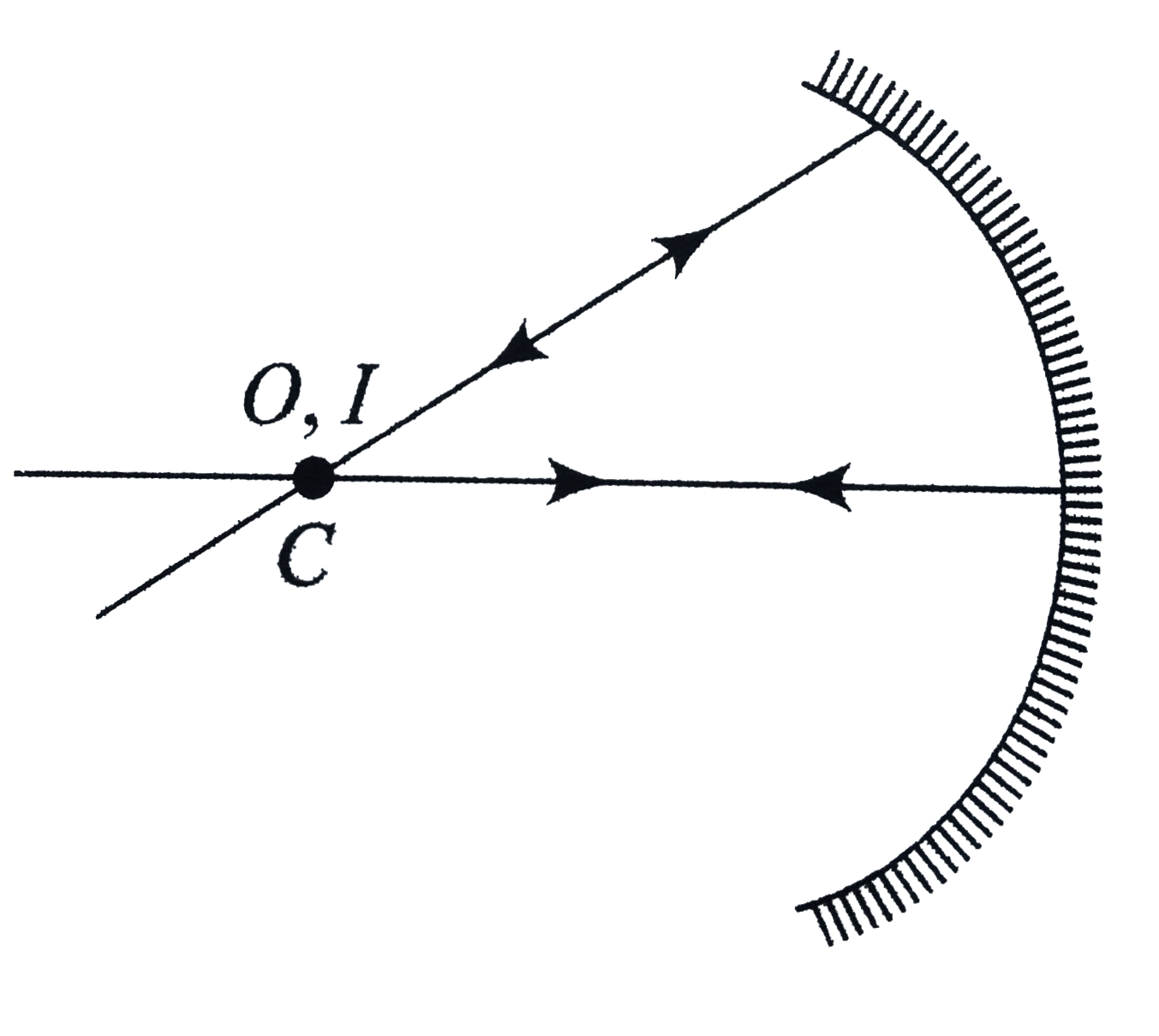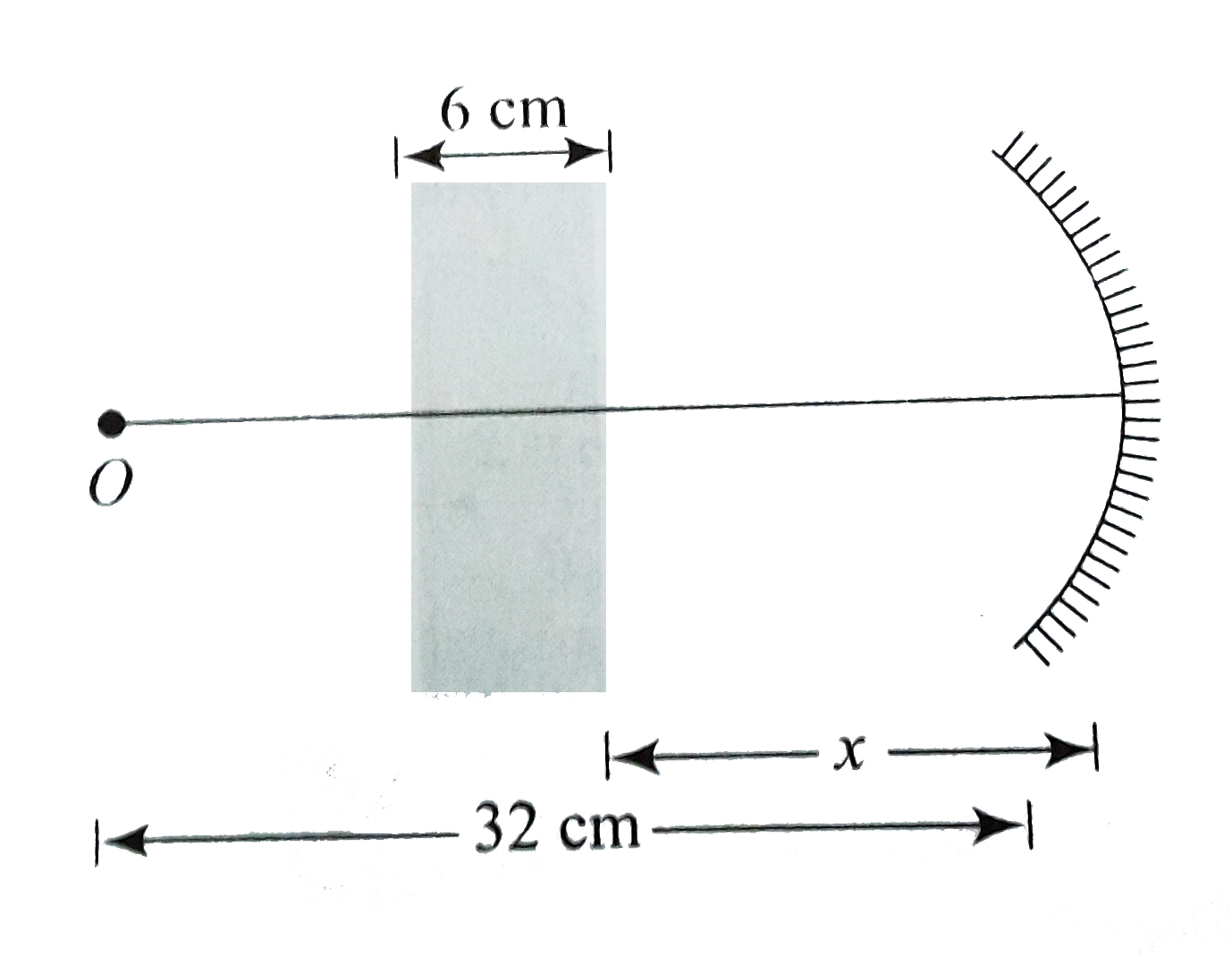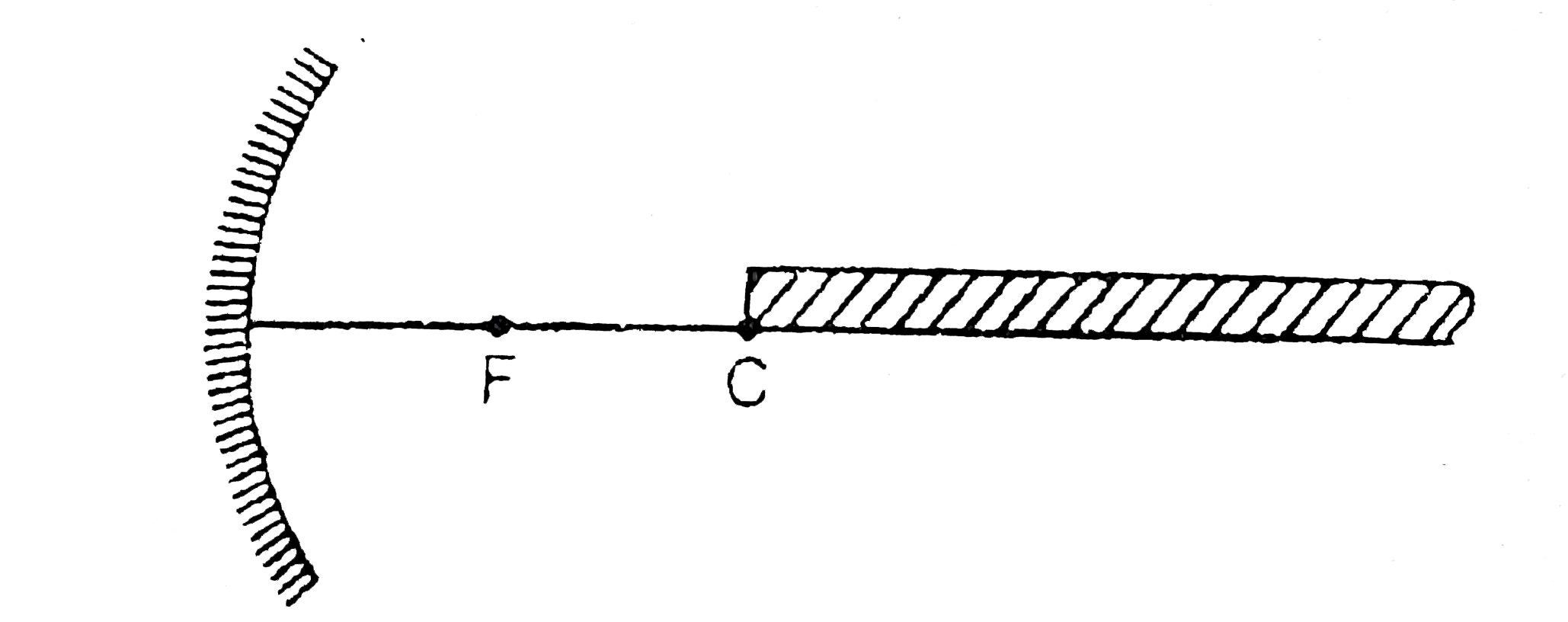P is a point on the axis of a concave mirror. The image of P, formed by the mirror, coincides with P. A rectangular glass slab of thickness t and refractive index is now introduced between P and the mirror. For the image of P to coincide with P again, the mirror must be moved
towards P by
away from P by
away from the lens by
towards the lens by
The correct Answer is:D
To solve the problem step by step, we will analyze the situation involving the concave mirror, the point P, and the glass slab.
Step 1: Understand the Initial Condition
Initially, point P is located on the axis of a concave mirror, and the image formed by the mirror coincides with point P. This means that point P is at the focal point of the mirror.
Step 2: Introduce the Glass Slab
When a rectangular glass slab of thickness t and refractive index μ is introduced between point P and the mirror, it affects the path of light rays traveling from P to the mirror. The glass slab causes a change in the effective position of point P due to refraction.
Step 3: Calculate the Displacement Caused by the Glass Slab
The introduction of the glass slab causes a displacement of the effective position of point P. The formula for the apparent shift caused by the slab is given by:
Displacement=t(1−1μ)
This formula accounts for the thickness of the slab and its refractive index.
Step 4: Determine the Movement of the Mirror
To ensure that the image of point P coincides with point P again after the introduction of the glass slab, the mirror must be moved. The distance the mirror needs to be moved is equal to the displacement caused by the glass slab:
Distance moved by the mirror=t(1−1μ)
Step 5: Conclusion
Thus, the mirror must be moved away from the glass slab by a distance of t(1−1μ) for the image of point P to coincide with point P again.
Final Answer
The mirror must be moved away from the lens by a distance of t(1−1μ).
---
Initially, point P is located on the axis of a concave mirror, and the image formed by the mirror coincides with point P. This means that point P is at the focal point of the mirror.
When a rectangular glass slab of thickness t and refractive index μ is introduced between point P and the mirror, it affects the path of light rays traveling from P to the mirror. The glass slab causes a change in the effective position of point P due to refraction.
The introduction of the glass slab causes a displacement of the effective position of point P. The formula for the apparent shift caused by the slab is given by:
Displacement=t(1−1μ)
This formula accounts for the thickness of the slab and its refractive index.
To ensure that the image of point P coincides with point P again after the introduction of the glass slab, the mirror must be moved. The distance the mirror needs to be moved is equal to the displacement caused by the glass slab:
Distance moved by the mirror=t(1−1μ)
Thus, the mirror must be moved away from the glass slab by a distance of t(1−1μ) for the image of point P to coincide with point P again.
The mirror must be moved away from the lens by a distance of t(1−1μ).
Similar Questions
A converging lens forms a real image I on its optic axis. A rectangular galss slab of refractive index μ and thickness t is introduced between the lens and I. I will move
View SolutionAn object is placed 21 cm in front of a concave mirror of radius of curvature 10cm. A glass slabe of thickness 3cm and refractive index 1.5 is then placed close to the irror in the space between the object and the mirror. The distance of the near surface of the slabe from the mirror is 1cm. The final image from the mirror will be formed at
View SolutionA point object is placed on principal axis of a concave mirror of radius of curvature 20cm at a distance 31cm from poll of the mirror. A glass slab of thikness 3cm and refractive index 1.5 is placed between object and mirror as shown in the figure. Find the distance (in cm) of final image formed by the system from the mirror.

View SolutionThe image of an object kept at a distance of 30 cm in front of a concave mirror is found to coincide with itself. If a glass slab (μ=1.5) of thickness 3 cm is introduced between the mirror and the object, then
a. Identify, in which direction the mirror should be displaced so that the final image may again coincide with the object itself.
b. Find the magnitude of displacement.

View SolutionAn object is placed 21 cm in fron of a concave mirror of radius of curvature 20 cm.A glass slab of thicknes 3 cm and refractive index 1.5 is palced close to the mirror in the space between the object and the mirror. Find the position of the final image fromed. The distance of the nearer surface of the slab from the mirror is 10 cm.

View SolutionAn object P is focussed by a microscope M. A glass slab of thickness 2'1 cm is introduced between P and M. If the refractive index of the slab is P5, by what distance should the microscope be shifted to focus the object again ?
View SolutionA point object is placed 33cm from a convex mirror of curvature radius =40cm A glass plate of thickness 6cm and refractive index 2.0 placed between the object and mirror,close to the mirror,find the distance of final image form the object?
View SolutionA glass slab of thickness 3cm and refractive index 1.5 is placed in front of a concave mirror of focal length 20cm. Where should a point object be placed if it is to image on to itself?
View SolutionA point object O is placed in front of a concave mirror of focal length 10cm. A glass slab of refractive index μ=3/2 and thickness 6cm is inserted between the object and mirror.

Q. Find the position and nature of the final image when the distance x shown in figure, is 5cm.
View SolutionAn infinitely long reactangular strip is placed on principal axis of a concave mirror as shown in figure. One end of the strip coincides with centre of curvature as shown. The hright of rectangular strip is very small in comparison to focal length of the mirror. Then the shape of image of strip formed by concave mirror is
 .
.
View Solution
